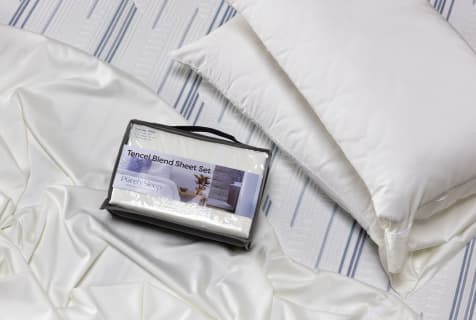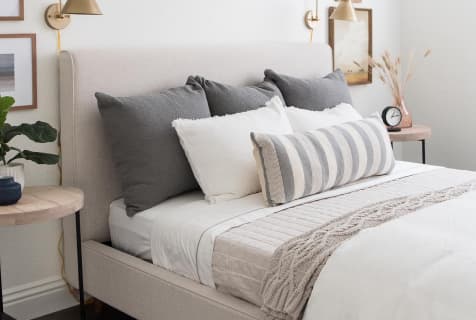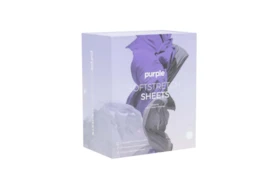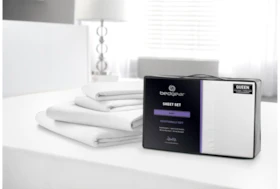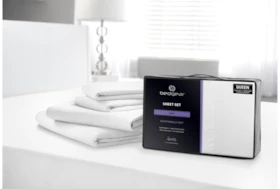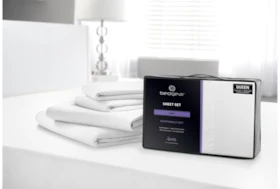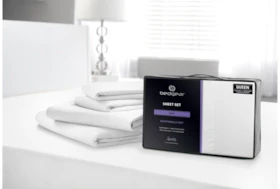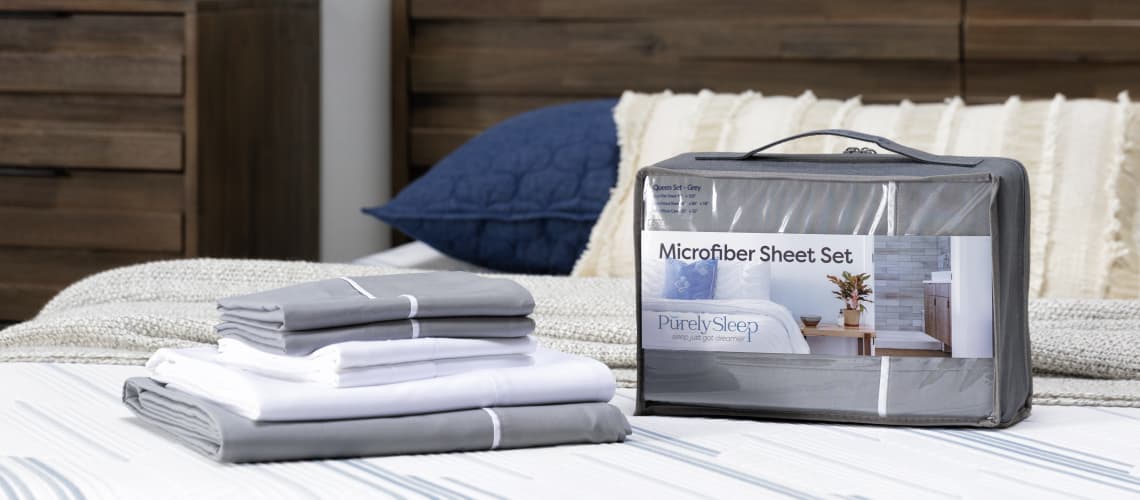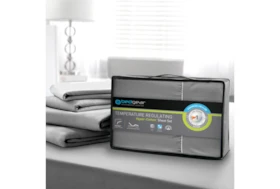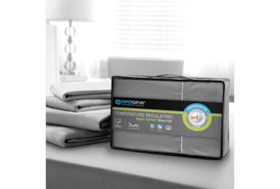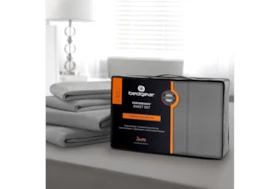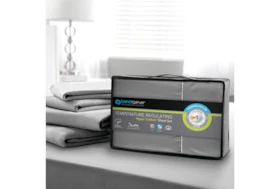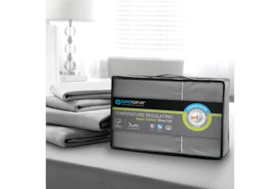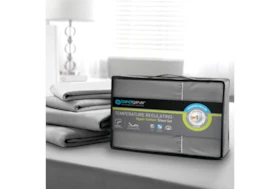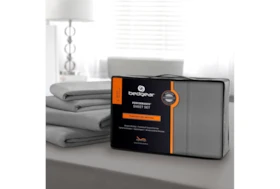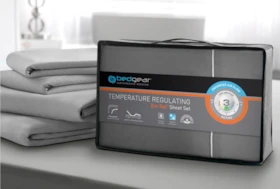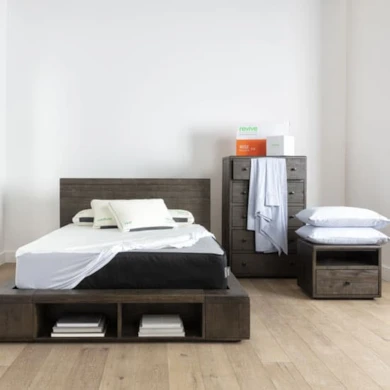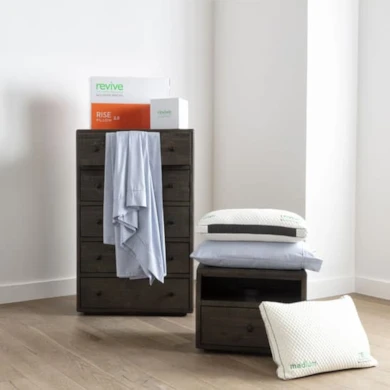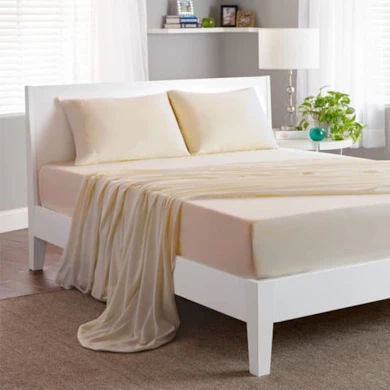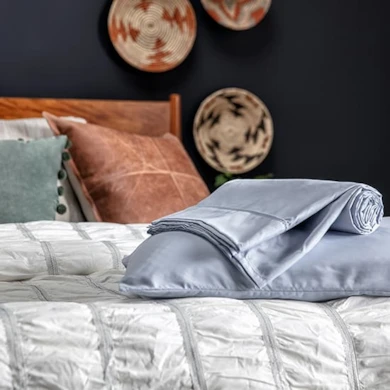What is the Best Thread Count for Bed Sheets?
The Best Sheets: Feel, Price + Material
Each of the following materials has a different level of softness, warmth, durability, and stain resistance, as personal preference plays a large factor in material choice (e.g. not everyone loves to sleep on expensive silk). In terms of the type of material that the sheet is made from, it’s important to note that some of these materials are natural and others are man-made. The price is usually driven by how difficult it is to acquire and manufacture a sheet out of a specific material.
Factors to Consider: Ply
The ply of a sheet refers to the number of fibers used to create a single thread. In a one-ply sheet, a single fiber is twisted to create a single thread. A two-ply sheet twists two fibers together to create each thread.
Many brands that use multiple-ply threads often do so because the material is thinner and requires doubling or tripling up so that the threads are strong enough to weave. Keep in mind that multiple-ply can affect thread count numbers, so if a higher thread count number is important to you, make sure to research whether you’re getting a high number from single-ply (which will feel softer) or multi-ply (which, compared to single-ply, won’t feel as soft – and, depending on the quality of the material, can even feel rough and scratchy).
In general, customers seeking more luxury and willing to spend a bit more should look for one-ply (a.k.a. single-ply) sheets. These are usually the softest and more durable (yet pricier!) sheets.
Factors to Consider: High Thread Count (+ What Does Thread Count Mean?)
Thread count refers to the number of horizontal threads plus the number of vertical threads in each square inch of material. So a bed sheet with 150 threads in a vertical inch and 150 threads in a horizontal inch would have a thread count of 300.
To get a higher thread count, a manufacturer must use thinner threads and weave them closer together. This tight weave of high-quality thread results in a fabric that is softer, smoother, and stronger.
However, sometimes threads can be manipulated into one strand (i.e., by twisting two or three threads together, to form one thread). This creates a higher thread count by moving from thread that is single-ply to thread that has two, three, or more fibers twisted together. Using the multi-ply method, a manufacturer may use 150x150 two-ply thread and label that as a 600 thread count.
The maximum thread count that can be engineered from an expensive single-ply thread is around a 500 thread count. Customers should be skeptical of any product that advertises a thread count above 600; after 600, higher prices won’t always equal more softness.
Also, only compare thread counts across products of the same material. In other words, you should not compare a 120-count fine linen sheet against a 300-count Upland cotton sheet. The materials are so different that the thread count becomes less of a factor in the decision. You will have better luck comparing a 120-count linen sheet against a 300-count linen sheet.
Does Thread Count Matter? Here's the Final Recommendation
To summarize the above: customers looking for the best quality sheets should choose a luxury material (such as silk or Egyptian cotton), with a single-ply, at the highest thread count available, typically within the 200-500 thread count range. A lower thread count will result in a less comfortable feel. For a sweet spot, we say go for a 400 thread count.
Number of threads alone should never be the only factor in making a bed sheet decision. Focusing only on the thread count ignores the unique qualities of different types of materials and leaves you at risk of being misled when less multi-ply threads are used instead of more single-ply threads. Before purchasing a bed sheet set, be sure to review the material and features – and not just the thread count!
— More Great Articles —
Read the Latest
Editorial Disclaimer: Articles featuring tips and advice are intended for educational purposes and only as general recommendations. Always practice personal discretion when using and caring for furniture, decor and related items.

